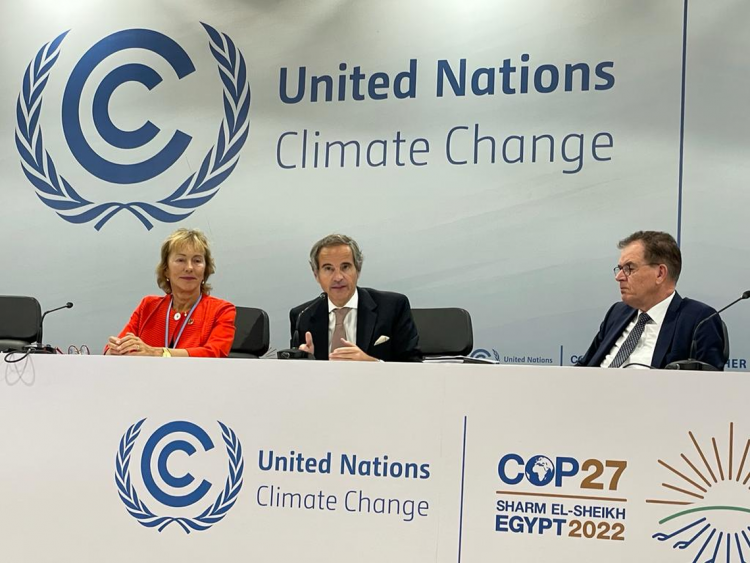Nuclear science and technology are part of the solution to both mitigating greenhouse gas emissions and adapting to climate change impacts. This was the message from IAEA Director General Rafael Mariano Grossi at this year’s United Nations climate change conference, COP27.
Attending COP27 on Wednesday and Thursday, Mr Grossi opened for the first time a nuclear pavilion led by the IAEA in cooperation with the nuclear community took part in COP27 events and met with climate leaders and decisions makers to discuss ways in which nuclear could play a role in helping to solve the global climate problem. This year the IAEA and its partners are hosting more than 40 events at the pavilion, all of which are being livestreamed.
“We all know that the challenges posed by climate change are very, very difficult,” Mr Grossi said. “This is why nuclear is here, because nuclear has a place at the table, because nuclear is part of the solution towards a decarbonized energy mix in the world.” He explained that the IAEA is working together with international partners to show the possibilities of nuclear science and technology and how it and the IAEA will be part of the climate solution.
Mr Grossi’s presence at the event in Sharm El-Sheikh, Egypt, is the third time that an IAEA Director General has taken part in a COP — the other two being COP25 in Madrid and COP26 in Glasgow, both also attended by Mr Grossi. The growing participation of the IAEA and the nuclear community reflects of changing attitudes to nuclear energy as the climate crisis worsens. Over the past five decades nuclear energy has avoided the release of more than 70 gigatons of carbon dioxide, and today globally, more than 400 reactors produce about a quarter of the world’s low-carbon energy.
We all know that the challenges posed by climate change are very, very difficult. This is why nuclear is here, because nuclear has a place at the table, because nuclear is part of the solution towards a decarbonized energy mix in the world.








